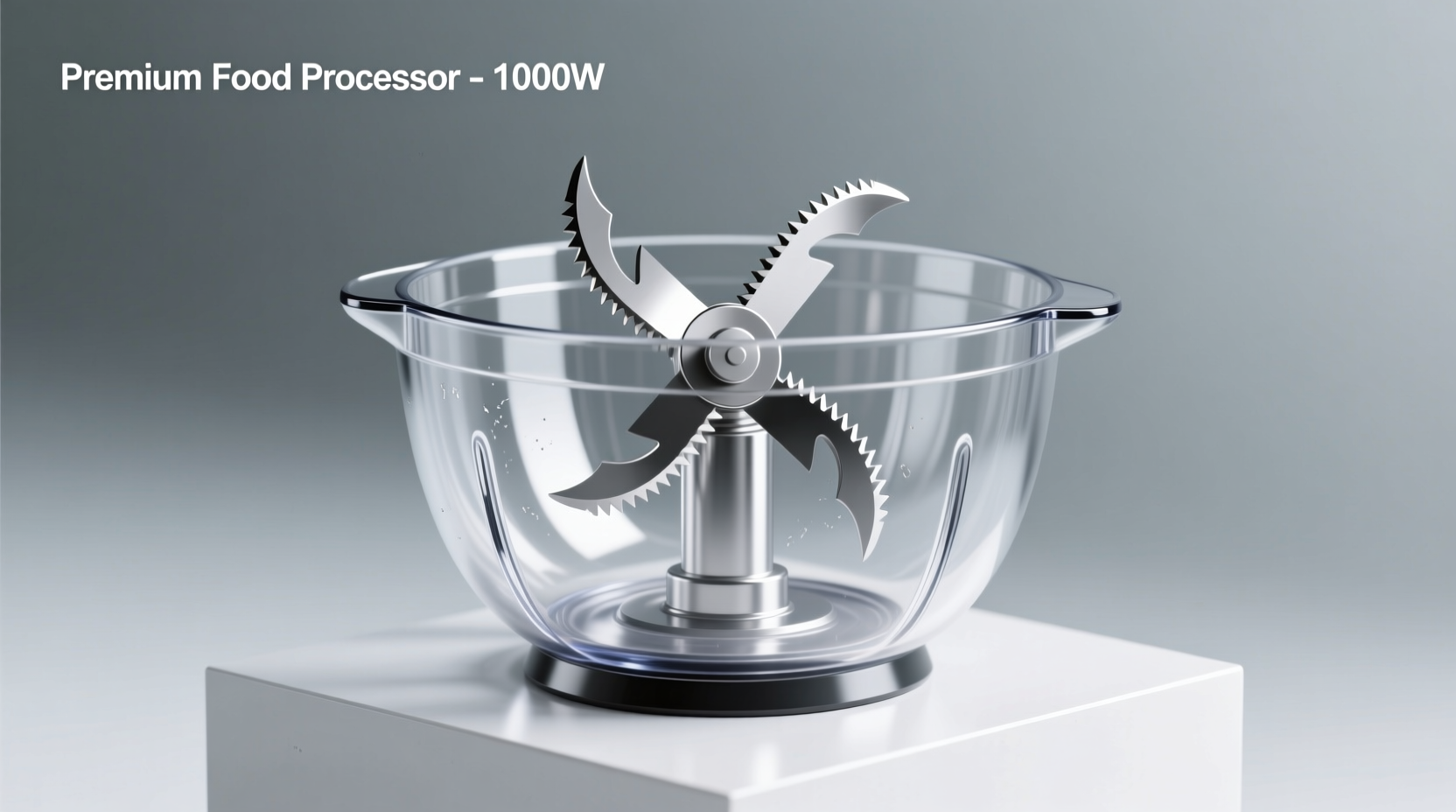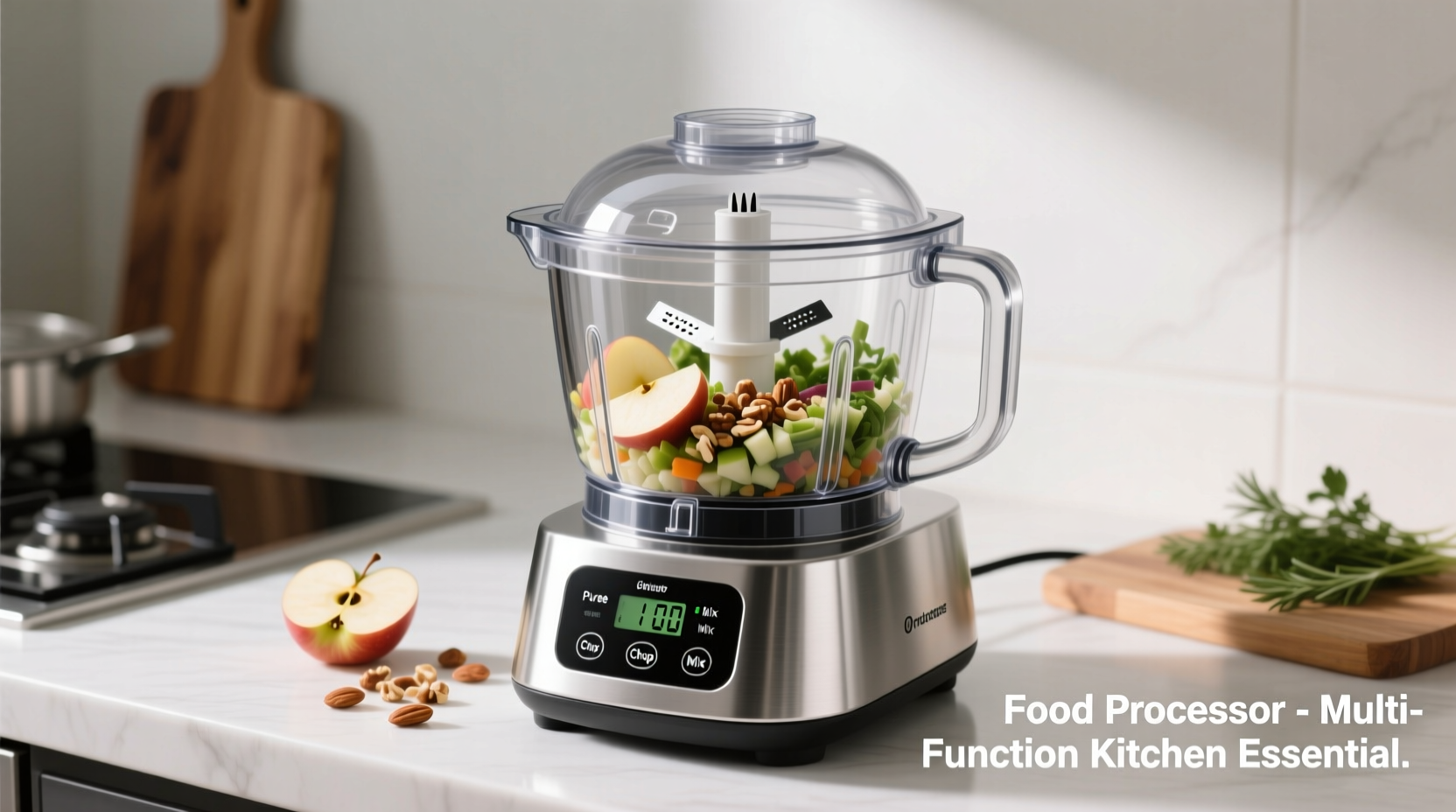Ever wonder why professional chefs and home cooks alike keep reaching for that countertop workhorse? Understanding what a food processor is goes beyond basic definition—it's about recognizing how this single appliance transforms your cooking efficiency. Unlike specialized tools that handle just one task, a quality food processor replaces multiple kitchen gadgets while delivering consistent results that manual preparation simply can't match.
The Food Processor Defined: More Than Just Chopping
At its core, a food processor consists of a powerful electric motor base, a transparent work bowl with measurement markings, a secure locking lid, and multiple interchangeable blades or discs. The standard configuration includes an S-shaped metal blade for chopping and pureeing, a shredding disc, a slicing disc, and a dough blade. Modern models typically feature 4-12 cup capacities with variable speed controls and pulse functions that give you precise control over texture.

What fundamentally distinguishes a food processor from other appliances is its ability to handle both wet and dry ingredients across a wide texture spectrum—from coarse chopping to fine pureeing—all within the same work bowl. This versatility makes it indispensable for tasks that would otherwise require multiple tools and significantly more time.
How Food Processors Work: The Mechanics Behind the Magic
When you activate a food processor, the motor drives the chosen blade at high speed (typically 500-2000 RPM). The S-blade creates a vortex that pulls ingredients downward toward the cutting edge, then flings them back upward along the bowl walls—a continuous cycle that ensures even processing. The pulse function gives you momentary bursts of power for controlled chopping without over-processing.
Safety features have evolved significantly since the first food processors appeared in the 1970s. Modern units require proper assembly (bowl locked, lid secured) before operating, and most include feed tubes of varying sizes that allow you to add ingredients while the machine runs. Understanding these mechanics helps you use the appliance more effectively while avoiding common mistakes like overfilling or improper blade selection.
| Food Processor Component | Primary Function | Key Considerations |
|---|---|---|
| S-Blade (Metal) | Chopping, pureeing, emulsifying | Ideal for onions, nuts, sauces; not for fine shredding |
| Shredding Disc | Creates uniform shreds | Perfect for cheese, vegetables; varies by thickness |
| Slicing Disc | Produces even slices | Adjustable thickness options on premium models |
| Dough Blade | Mixes and kneads dough | Less effective than stand mixers for large batches |
Food Processor vs. Blender: Understanding the Critical Differences
Many home cooks confuse food processors with blenders, but their design purposes differ significantly. Blenders excel at liquid-based tasks like smoothies and soups, featuring tall containers and downward-pulling blades optimized for creating vortexes in liquids. Food processors, with their wide, shallow bowls and multi-directional blade action, handle solid ingredients more effectively.
Consider this practical comparison: when making pesto, a blender requires frequent scraping and produces inconsistent results as ingredients get trapped above the liquid line, while a food processor processes the entire batch evenly without needing liquid assistance. Similarly, for chopping vegetables, a food processor delivers uniform pieces in seconds, whereas a blender would turn them into uneven pulp.
Practical Applications: Where Food Processors Shine
The true value of understanding what a food processor is lies in recognizing its practical applications. Professional kitchens rely on them for tasks that would otherwise consume valuable prep time:
- Vegetable prep: Dice onions in 10 seconds (vs. 3-5 minutes manually) with minimal tears
- Sauces and dips: Create perfectly emulsified mayonnaise or pesto in under a minute
- Baking prep: Cut butter into flour for pastry dough with consistent results
- Grating: Shred cheese or vegetables 5x faster than by hand
However, food processors have specific context boundaries where they're less effective. They struggle with very small batches (under 1 cup), extremely hard ingredients like ice or frozen foods, and tasks requiring delicate handling like whipping egg whites. Recognizing these limitations helps you choose the right tool for each job.
Choosing Your First Food Processor: Practical Considerations
When selecting a food processor, capacity needs vary based on your cooking habits. A 7-9 cup model serves most households well, handling everything from single-slice cheese shredding to family-sized dough batches. Look for models with dishwasher-safe components, sturdy construction (avoiding excessive plastic), and intuitive controls.
Consumer Reports testing shows that units with 600+ watt motors handle tough tasks like nut butters and dense doughs more effectively than lower-powered models. While premium brands like Cuisinart and Breville offer excellent performance, mid-range options from KitchenAid and Hamilton Beach provide 80% of the functionality at half the price for most home cooking needs.
Maximizing Your Food Processor's Lifespan
Proper maintenance significantly extends your appliance's usability. Always disassemble and clean components immediately after use—dried food particles can damage seals and affect performance. The motor base should never be submerged; wipe with a damp cloth instead. Store blades separately in protective cases to maintain sharpness.
For optimal performance, alternate between the pulse function and continuous operation when processing dense ingredients. Never exceed the maximum fill line, and always use the appropriate blade for the task—forcing the wrong blade can strain the motor. With proper care, quality food processors regularly last 7-10 years of regular use.











 浙公网安备
33010002000092号
浙公网安备
33010002000092号 浙B2-20120091-4
浙B2-20120091-4